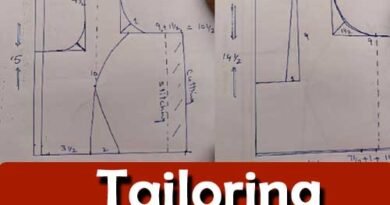Couching & Cross Stitching
Embroidery encompasses a wide range of techniques that allow artists to create intricate designs on fabric using thread and sometimes other materials. In this class, we will explore two distinctive techniques: Couching and Cross Stitching. These techniques have been used for centuries to adorn textiles with decorative patterns, motifs, and designs.
1. Couching
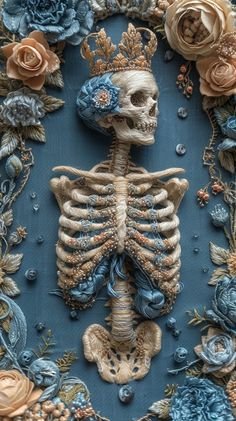
Overview: Couching is a technique where a thicker thread or yarn is laid on the surface of the fabric and stitched in place with a finer thread. It is often used to create bold outlines, fill shapes, or add texture and dimension to embroidered designs.
Materials Needed:
- Fabric (e.g., cotton, linen)
- Embroidery hoop
- Embroidery needles (suitable for the thread/yarn thickness)
- Threads (fine embroidery thread and thicker yarn or thread for couching)
- Scissors
- Design or pattern (optional)
Technique:
- Preparation: Secure your fabric in an embroidery hoop to maintain tension and facilitate stitching.
- Setting Up: Choose a thicker thread or yarn for couching. This will serve as the decorative element on the fabric.
- Starting the Stitch: Bring your needle and fine thread up through the fabric at the starting point of your design.
- Couching Stitch: Lay the thicker thread or yarn along the desired path on the fabric.
- Securing the Thread: Use the fine thread to stitch over the thicker thread/yarn at regular intervals, anchoring it to the fabric.
- Progressing: Continue couching the thicker thread/yarn along the design lines or shapes as planned.
- Finishing: Secure the thread on the backside of the fabric with a small knot or by weaving it into nearby stitches.
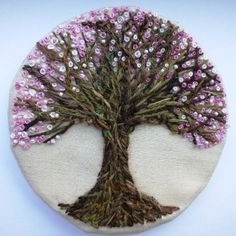
Application in Embroidery:
- Outlines: Couching is often used to create bold outlines around shapes or motifs in embroidery designs.
- Filling: It can also be used to fill larger areas, creating textured or patterned surfaces.
- Texture: Couching adds texture and dimension to embroidery, making it ideal for creating visually striking pieces.
Variations:
- Raised Couching: Use thicker materials like wool or yarn and space the stitches further apart to create a raised effect.
- Couched Goldwork: In traditional embroidery, couching is commonly used in goldwork embroidery to secure metallic threads, creating luxurious designs.
2. Cross Stitching
Overview: Cross stitching is a popular and versatile embroidery technique characterized by its X-shaped stitches. It is used to create fine, detailed patterns, motifs, and designs on fabric.
Materials Needed:
- Fabric (e.g., Aida cloth, linen)
- Embroidery hoop
- Cross stitch needles (with blunt ends to prevent splitting threads)
- Embroidery floss or thread (usually divisible into strands)
- Scissors
- Cross stitch pattern or chart
- Optional: Embroidery frame, magnifier (for intricate designs)
Technique:
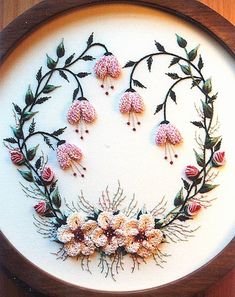
- Preparing the Fabric: Secure your fabric in an embroidery hoop to maintain tension and facilitate stitching.
- Thread Preparation: Separate embroidery floss into strands according to your pattern’s recommendations (typically 2 strands for standard cross stitch).
- Starting the Stitch: Bring your needle up through the fabric at the bottom left corner of a cross stitch square.
- Cross Stitch: Create an X-shaped stitch by inserting the needle diagonally across the square, from bottom left to top right, and then from top left to bottom right.
- Completing Rows: Work rows of stitches from left to right, completing each cross stitch square before moving on to the next.
- Changing Colors: Follow your pattern to change colors of thread as necessary, ensuring the stitches align correctly.
- Finishing: Secure the thread on the backside of the fabric with a small knot or by weaving it into nearby stitches.
Application in Embroidery:
- Designs: Cross stitching is used to create intricate designs, patterns, and motifs on fabric, ranging from traditional samplers to modern decorative pieces.
- Textiles: It is commonly used on various textiles, including clothing, household linens, and decorative items.
- Personalization: Cross stitch allows for personalization by stitching names, dates, or messages into designs.
Variations:
- Counted Cross Stitch: Most common, where stitches are made according to a chart or pattern on even-weave fabric like Aida cloth.
- Stamped Cross Stitch: Ideal for beginners, where the design is printed on the fabric, and stitches are made following the printed pattern.
- Specialty Stitches: Beyond basic cross stitches, specialty stitches like half stitches, quarter stitches, or backstitches can add detail and depth to designs.
Conclusion
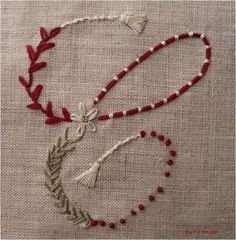
Both couching and cross stitching are valuable techniques in the world of embroidery, offering artists diverse methods to create beautiful and intricate designs on fabric. Whether you’re drawn to the dimensional effects of couching or the precision of cross stitching, these techniques provide endless opportunities for creativity and expression. With practice and experimentation, you can master these techniques and use them to bring your unique embroidery projects to life. Enjoy the journey of stitching and creating beautiful textile art!
